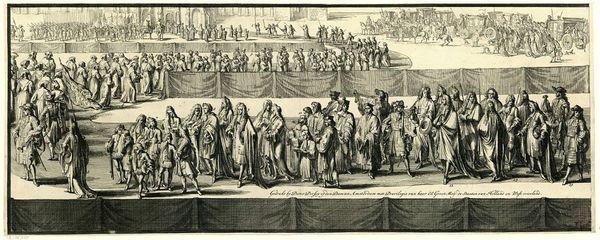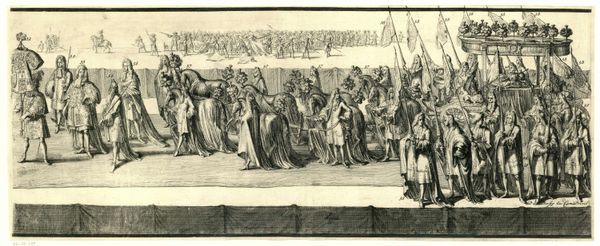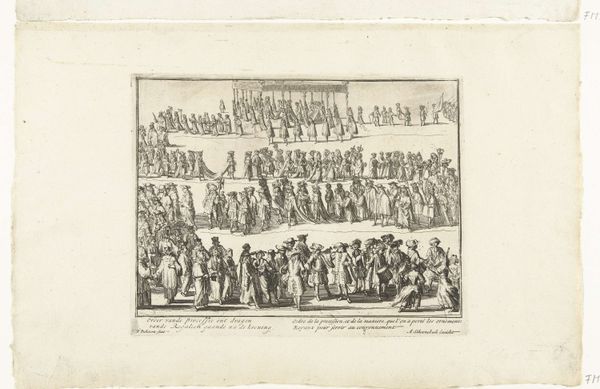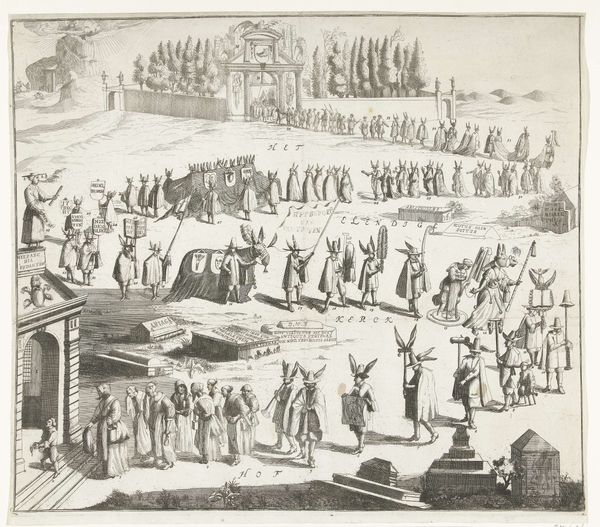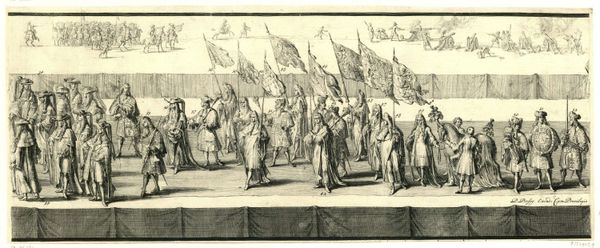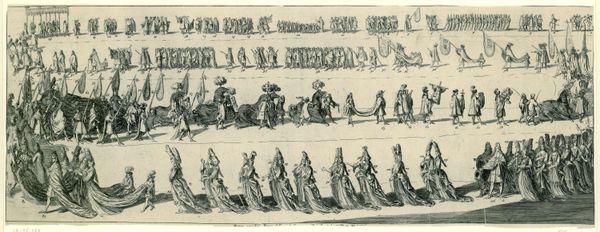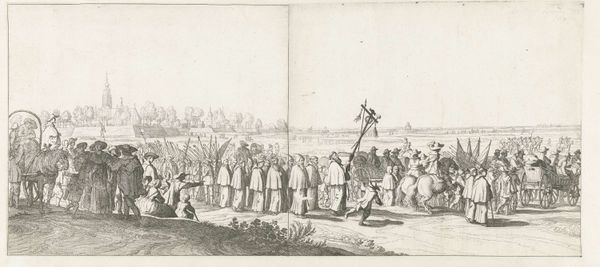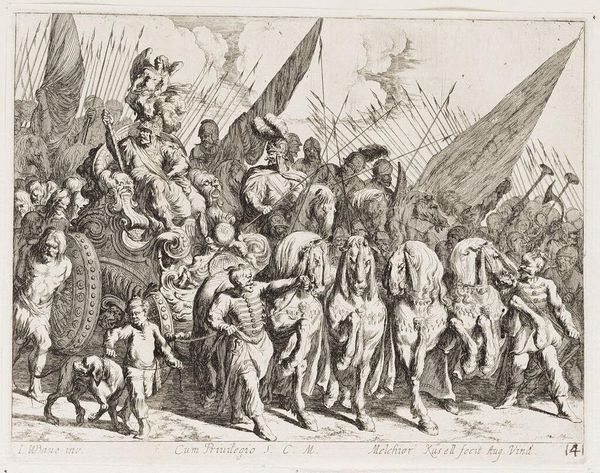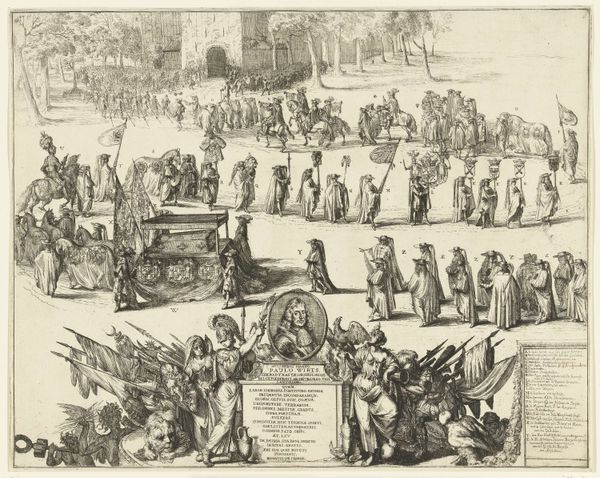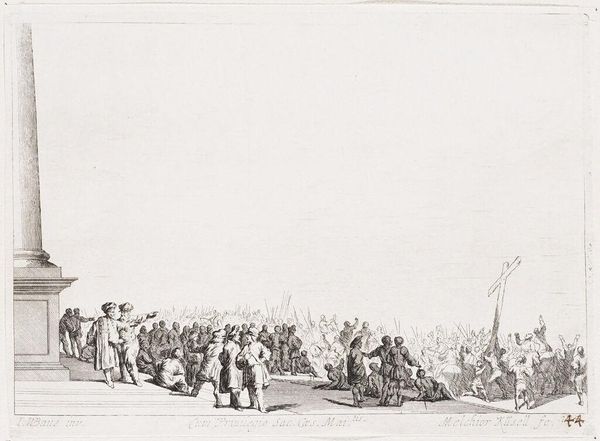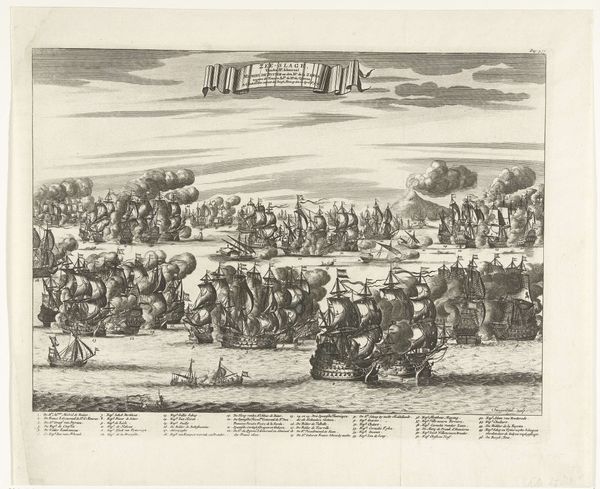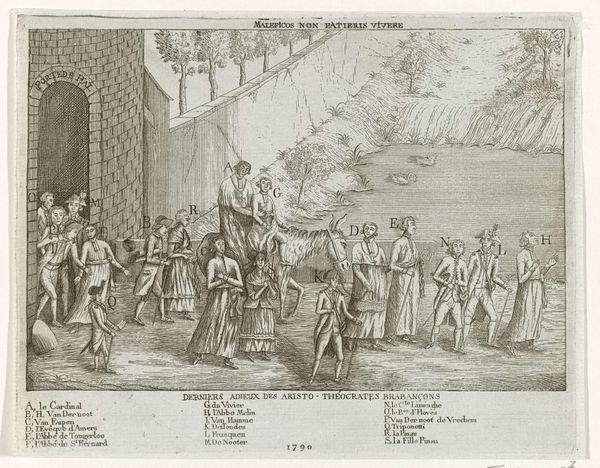
De lijkstatie van de koningin, eerste deel, tweede helft, 1695 1695
0:00
0:00
print, engraving
#
narrative-art
#
baroque
#
pen drawing
# print
#
figuration
#
line
#
cityscape
#
history-painting
#
engraving
Dimensions: height 233 mm, width 583 mm
Copyright: Rijks Museum: Open Domain
Curator: This detailed engraving, created by Romeyn de Hooghe in 1695, captures "The Queen's Funeral Procession, Part One, Second Half." It is part of the Rijksmuseum's collection. Editor: My initial impression is one of somber observation. The sheer number of figures meticulously rendered suggests a profound public event. There’s a theatrical quality, as if we’re witnessing a carefully staged moment of collective grief and performative honor. Curator: Indeed. De Hooghe was renowned for his meticulous documentation of public ceremonies. The print highlights the elaborate rituals surrounding the death of a monarch, underscoring the social and political importance of such events. The artist's style employs very fine line work characteristic of Baroque engravings of the era. Editor: The procession's composition is striking—the ranks of figures juxtaposed against what appear to be symbolic pyres burning in the background. It seems to elevate the historical moment, giving us both intimate human representation and monumental drama, even a bit of theater of power. Curator: The historical context is vital. In 1695, royal funerals were grandiose affairs designed to consolidate power and demonstrate the stability of the monarchy, even in mourning. Consider that the display wasn't only about respecting the departed but also an active effort in preserving the institution's image and function. Editor: I am curious about who is not visible or represented, the social structures reinforcing the image. How did gender, class, and race inform who had the honor—or the duty—of appearing in this procession? The spectacle certainly masks those absences and social stratifications. Curator: A crucial point. Engravings like this circulated widely and influenced public opinion, shaping collective memory. So the way those elements, like gender or class, were consciously highlighted (or erased) played a considerable role in its historical narrative. Editor: Right. It reveals as much about the society's values and power dynamics as it does about honoring the queen. Looking back now, three centuries later, this image prompts reflections on what narratives and hierarchies were being actively reproduced and solidified within the community. Curator: Indeed. It's through these explorations that we can recognize how artists like De Hooghe contributed to and reflected the political landscape of their time. The value resides in recognizing and examining the complexities of the work. Editor: For me, reflecting on its significance and what the artist created requires understanding what power dynamics and narrative control underpin even these apparently straightforward representations of an event. It encourages a more complex historical understanding of social roles and the era.
Comments
No comments
Be the first to comment and join the conversation on the ultimate creative platform.
